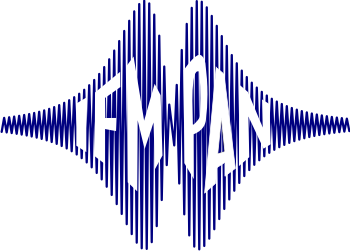Institute of Molecular Physics, PAS

Name: Institute of Molecular Physics, PAS
Address: ul. Mariana Smoluchowskiego 17, 60-179 Poznań, Poland
Website: https://www.ifmpan.poznan.pl/pl/
Description:
The history of the Institute begins in 1953, when a branch of the Warsaw Institute of Physics of the Polish Academy of Sciences was opened in Poznań with Departments of Ferromagnetics and Ferroelectrics, managed by Szczepan Szczeniowski. In 1956, the Department of Dielectrics under direction of Arkadiusz Piekara was established and in 1966 the Department of Radiospectroscopy managed by Jan Stankowski appeared. In 1975, the Institute of Molecular Physics (IFM PAN) became independent institution of the Polish Academy of Sciences. Today, the Institute consisting of 14 scientific departments and employing about 120 staff, is a place of ground-breaking scientific research in physics of magnetism, low temperature physics, physics of dielectric and functional materials, radio- and microwave spectroscopy, nanomaterials, auxetics, spintronics, quantum cryptography and other issues. Each year, the Institute's staff publishes more than 100 articles in international journals and presents about 200 posters, oral or invited talks at national and international conferences. About half of these achievements result from cooperation with foreign partners. The Institute attaches also great importance to the education of students and youth from high schools. Currently, several PhD students are preparing doctoral dissertations in the field of condensed matter physics and every year, over a dozen students complete theirs diploma theses at the Institute. The Institute of Molecular Physics of the Polish Academy of Sciences was awarded with the medal of the Polish Academy of Sciences for "Special contributions to the development of Polish and world science related to the social role of science".
Disciplines: molecular physics, condensed matter physics, material science, biophysics and related issues.
Fields of activity:
- simple and multi-functional dielectric materials and advanced materials for molecular electronics like mesogenic systems, hydrogen bonded compounds, molecular gels, organic proton conductors and multiferroics – studies of their structure, molecular dynamics and phase transitions;
- bulk and thin film magnetic materials, magnetic functional materials and organic multifunctional materials – studies of magnetic, optical and transport properties and theoretical studies of magnetic nanosystems;
- metamaterials with properties controlled by the structure including liquid crystals, auxetic materials and systems with unstable inclusions exhibiting extreme mechanical properties – studies of optoelectric properties and theoretical studies of theirs mechanical properties.
Latest achievements:
The institute boast many discoveries, of which the most outstanding in recent years are achievements in physics of magnetism, studies of biological systems and new thermodynamic theory of open systems, i.e.; discovery of magnetic domains without domain walls in a prototypical rare-earth–transition-metal ferrimagnet subjected to keV He+ ion bombardment; discovery of Lévy-like motions in metastatic cancer cells, qualitatively different than in their non-invasive counterparts; development of a new thermodynamic theory of open systems assuming that the dominant contribution to entropy production is the correlation between the environmental degrees of freedom. The Institute also cooperates in R&D activity with large companies, such as PGNiG on low-temperature technologies of extremely rare He3 element extraction. At the Institute, we are also proud of our patent portfolio, which encompasses such areas as superconducting nanowires, graphene magnetic field sensors, quantum filters for He3 rectification and devices for superfluid He4 technology.
Research facilities:
Laboratory of electron microscopy and lithography equipped with FEI Nova Nanosem 650 scanning electron microscope with Bruker EDS QUANTAX 200 system, electron lithography system Raith ELPHY Plus, clean room class 1000 enabling resist deposition and structuring on nanometric scale/Layer deposition laboratory allowing for the deposition of complex (composed of many different layers) layered systems in the conditions of ultra-high vacuum by means of ion deposition and laser ablation/Environmental laboratory of surface physics and tunnel spectroscopy enabling fabrication of metal-oxide nanostructures, thin layers and magnetic layer systems by molecular beam epitaxy (MBE) and investigations by means of STM, STS, LEED, RHEED and XPS methods/Laboratory of laser scanning confocal microscopy equipped with Fluoview FV1000 confocal microscope based on Olympus IX81 motorized inverted microscope and additional Olympus BX53 polarizing microscope/Laboratory of magnetic, electric and thermodynamic measurements equipped with twin Quantum Design Physical Property Measurement System (PPSM) enabling measurements of magnetic susceptibility, magnetization, specific heat, electric and heat transport, magnetoresistance and Hall effect.
Contact person:
Professor Bartłomiej Andrzejewski
Director of Scientific Affairs
and@ifmpan.poznan.pl
(+48 61) 86 95 100
